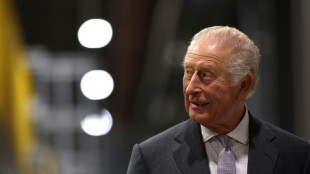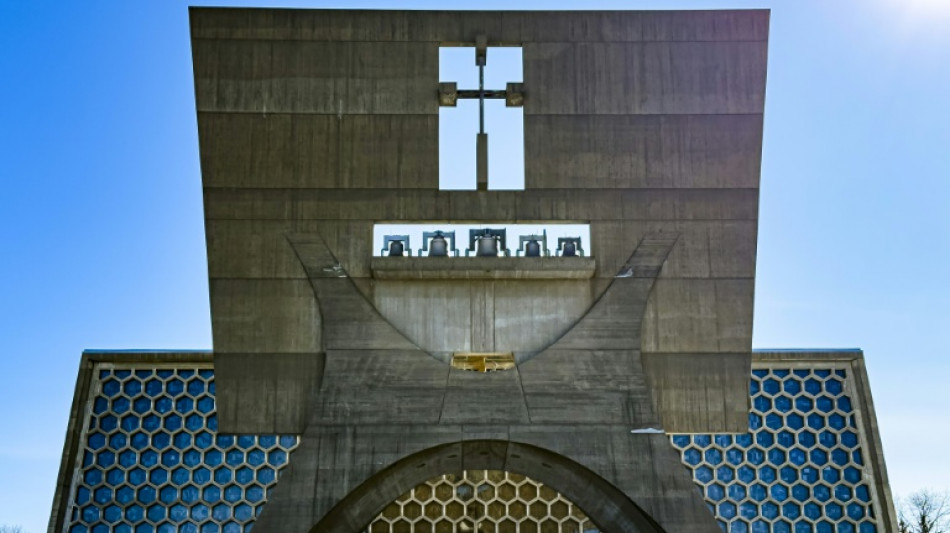
-
 World champion Liu wins Skate America women's crown
World champion Liu wins Skate America women's crown
-
Leftist leads Chile presidential poll, faces run-off against far right

-
 Haaland's Norway thump sorry Italy to reach first World Cup since 1998
Haaland's Norway thump sorry Italy to reach first World Cup since 1998
-
Portugal, Norway book spots at 2026 World Cup

-
 Sinner hails 'amazing' ATP Finals triumph over Alcaraz
Sinner hails 'amazing' ATP Finals triumph over Alcaraz
-
UK govt defends plan to limit refugee status

-
 Haaland's Norway thump Italy to qualify for first World Cup since 1998
Haaland's Norway thump Italy to qualify for first World Cup since 1998
-
Sweden's Grant captures LPGA Annika title

-
 Tuchel lays down law to Bellingham after England star's frustration
Tuchel lays down law to Bellingham after England star's frustration
-
Sinner caps eventful year with ATP Finals triumph over great rival Alcaraz

-
 Portugal book spot at 2026 World Cup as England stay perfect
Portugal book spot at 2026 World Cup as England stay perfect
-
Hakimi, Osimhen, Salah shortlisted for top African award

-
 Sinner beats great rival Alcaraz to retain ATP Finals title
Sinner beats great rival Alcaraz to retain ATP Finals title
-
Schenk wins windy Bermuda Championship for first PGA title

-
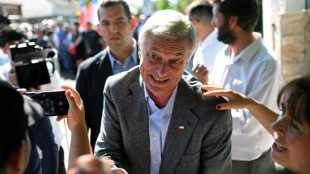 Crime, immigration dominate as Chile votes for president
Crime, immigration dominate as Chile votes for president
-
Kane double gives England record-setting finish on road to World Cup

-
 World champions South Africa add Mbonambi, Mchunu to squad
World champions South Africa add Mbonambi, Mchunu to squad
-
Greenpeace says French uranium being sent to Russia

-
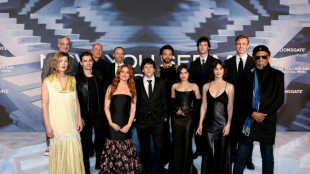 'Now You See Me' sequel steals N. American box office win
'Now You See Me' sequel steals N. American box office win
-
Argentina beat Scotland after frenzied fightback

-
 Argentina beat Scotland after stunning fightback
Argentina beat Scotland after stunning fightback
-
Pope urges leaders not to leave poor behind
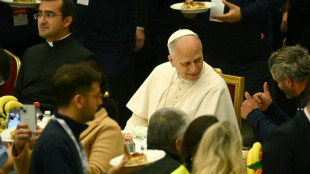
-
 Pressure will boost Germany in 'knockout' Slovakia clash, says Nagelsmann
Pressure will boost Germany in 'knockout' Slovakia clash, says Nagelsmann
-
Ecuador votes on hosting foreign bases as Noboa eyes more powers

-
 Portugal qualify for 2026 World Cup by thrashing Armenia
Portugal qualify for 2026 World Cup by thrashing Armenia
-
Greece to supply winter gas to war battered Ukraine

-
 India and Pakistan blind women show spirit of cricket with handshakes
India and Pakistan blind women show spirit of cricket with handshakes
-
Ukraine signs deal with Greece for winter deliveries of US gas
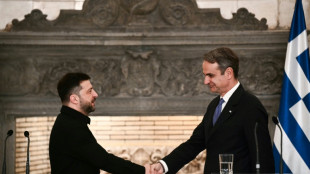
-
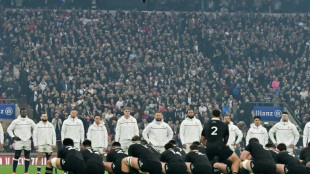 George glad England backed-up haka response with New Zealand win
George glad England backed-up haka response with New Zealand win
-
McIlroy loses playoff but clinches seventh Race to Dubai title

-
 Ecuador votes on reforms as Noboa eyes anti-crime ramp-up
Ecuador votes on reforms as Noboa eyes anti-crime ramp-up
-
Chileans vote in elections dominated by crime, immigration

-
 Turkey seeks to host next COP as co-presidency plans falter
Turkey seeks to host next COP as co-presidency plans falter
-
Bezzecchi claims Valencia MotoGP victory in season-ender

-
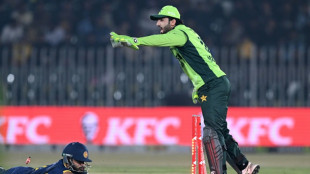 Wasim leads as Pakistan dismiss Sri Lanka for 211 in third ODI
Wasim leads as Pakistan dismiss Sri Lanka for 211 in third ODI
-
Serbia avoiding 'confiscation' of Russian shares in oil firm NIS

-
 Coach Gambhir questions 'technique and temperament' of Indian batters
Coach Gambhir questions 'technique and temperament' of Indian batters
-
Braathen wins Levi slalom for first Brazilian World Cup victory

-
 Rory McIlroy wins seventh Race to Dubai title
Rory McIlroy wins seventh Race to Dubai title
-
Samsung plans $310 bn investment to power AI expansion

-
 Harmer stars as South Africa stun India in low-scoring Test
Harmer stars as South Africa stun India in low-scoring Test
-
Mitchell ton steers New Zealand to seven-run win in first Windies ODI

-
 Harmer stars as South Africa bowl out India for 93 to win Test
Harmer stars as South Africa bowl out India for 93 to win Test
-
China authorities approve arrest of ex-abbot of Shaolin Temple
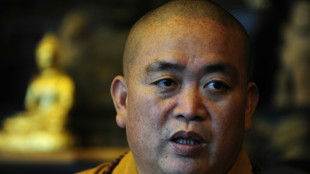
-
 Clashes erupt in Mexico City anti-crime protests, injuring 120
Clashes erupt in Mexico City anti-crime protests, injuring 120
-
India, without Gill, 10-2 at lunch chasing 124 to beat S.Africa

-
 Bavuma fifty makes India chase 124 in first Test
Bavuma fifty makes India chase 124 in first Test
-
Mitchell ton lifts New Zealand to 269-7 in first Windies ODI

-
 Ex-abbot of China's Shaolin Temple arrested for embezzlement
Ex-abbot of China's Shaolin Temple arrested for embezzlement
-
Doncic scores 41 to propel Lakers to NBA win over Bucks


How a 'forgotten' Minnesota monastery inspired 'The Brutalist'
On a snowy prairie in Minnesota stands a monastery like no other. A concrete trapezoid banner encasing a bell tower looms over a giant, beehive-shaped front window composed of hundreds of gently shimmering hexagons.
For half a century, the existence of this modernist masterpiece has been mainly known to the Benedictine monks who worship there, and the hordes of architects who make pilgrimages to Saint John's Abbey Church each summer.
But these days, it is finding new fame as the basis for "The Brutalist," the epic drama about an immigrant architect, haunted by the Holocaust, that is a favorite to win best picture at the Oscars.
The tale of the church's genesis is as unlikely as the movie plot it inspired, spanning titans of architecture, ambitious monks, Vatican reform -- and an almighty row over that beehive window.
Giving tours to guests, abbey member Alan Reed begins by asking his guests: "How could this have happened?"
"That this small college at the time, in the middle of nowhere, run by a group of monks, would hire a world-famous architect... it is an amazing story," he told AFP.
- 'Extraordinary' -
It begins with Baldwin Dworschak, a 44-year-old "buttoned-down" abbot, who inherited stewardship of a monastery rapidly outgrowing its historic grounds in the post-war US boom years of the 1950s.
At a time when the Catholic Church was reforming and modernizing, Dworschak and his advisors saw an opportunity to emulate the pioneering 12th-century European monks who ushered in the then-new Gothic style.
Arranged by a monk who had studied architecture, letters inviting commissions were sent out to Richard Neutra, Walter Gropius, Eero Saarinen and Marcel Breuer -- among the world's leading modernist architects at the time.
Amazingly, several responded, and Breuer -- a Hungarian Jew who had trained at Germany's influential Bauhaus school, and invented the sleek, tubular-steel chairs that furnish trendy offices to this day -- was appointed to oversee the giant church in a far northern corner of the United States.
The design he came up with was "something nobody had ever seen before," said Victoria Young, a professor of architecture at the University of St Thomas in Minnesota, who wrote a book on Breuer's "extraordinary" creation.
Chinese American architect I.M. Pei -- a former student of Breuer -- once wrote that Saint John's Abbey Church would be considered one of the greatest examples of 20th century architecture if it were located in New York, not Minnesota.
- Almighty row -
Brady Corbet, director of "The Brutalist," cites a book written by Hilary Thimmesh, a junior member of Dworschak's committee, as a key source for his movie.
Corbet told AFP he has visited Saint John's, and stumbled upon Thimmesh's memoir while doing extensive reading for the film.
Several parallels are clear: a Jewish architect designing a colossal Christian edifice on a remote US hilltop, in a controversial modernist style.
A major source of dramatic tension in the film occurs when the client -- a millionaire tycoon in the movie, rather than an abbot -- brings in his own designer, undermining the original architect.
In real life, Breuer struck up a friendship with Dworschak, but they fell out when the monks brought in their own stained-glass window designer, spurning the work of Breuer's close friend and former teacher Joseph Albers.
In a bitter letter, Breuer calls the move a "sudden blow" and states it would be "better to do nothing" than go ahead with the monks' preference.
The new design must be "terminated immediately," says another letter -- to no avail.
The power struggle in "The Brutalist" culminates in a horrific act of sexual violence in an Italian marble quarry.
Thankfully, the real-life client and architect quickly made up.
- 'Forgotten' -
Some inevitable Hollywood hyperbole aside, an Oscar-nominated film bringing attention to their monastery's hidden treasure is a source of pride for those connected to Saint John's.
Architect Robert McCarter wrote a book on Breuer "because I felt Breuer had been forgotten, even by the profession, to some degree," he told AFP.
"There are many people who think that Saint John's is, by far, his greatest building. That includes me," he said.
"It's still a place that enough people don't know about," agreed Young.
For the monks of Saint John's today, the film could offer a more practical lifeline.
The church is badly in need of repairs, with some concrete starting to crumble, and steel beginning to rust.
Their order has shrunk, from being the world's largest male Benedictine monastery with 340 monks, to below 100. It is far too few for such a cavernous space.
"If we could raise enough money," the monks could at least heat the church in winter and cool it in summer, said Reed.
And the attention the film is getting?
"The monks certainly are quite impressed," he said.
O.Norris--AMWN
